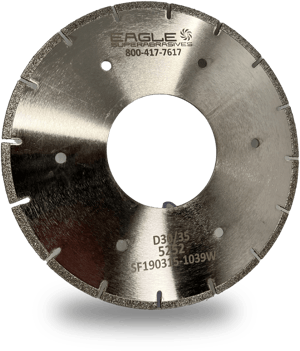In the superabrasive industry, there are many different options of bonding systems available, one stands alone in its ability to maintain a profile while being able to provide superior performance.

Electroplated grinding wheels are composed of two layers. The base layer refers to the wheel body, generally processed from steel. The body can take a variety of forms depending on the desired shape of the grinding wheel. The working layer, or electroplated layer, houses the mixture of abrasive (either diamond or CBN) and nickel coating responsible for cutting.
Electroplating is used in the production of grinding wheels as a bonding method. The wheel body is placed in a highly conductive electrolyte solution along with a mixture of abrasive and nickel. A battery source is then introduced, with the positive lead connected to the nickel-abrasive mixture creating a cathode and the negative lead connected to the body creating an anode. The electrical current runs from the cathode to the anode depositing the mixture onto the surface of the wheel body. The result is a grinding wheel that holds its form with no need for dressing. At Eagle, an additional Nickel-Matrix encapsulation layer is added next. Using the same process, this additional layer creates a tighter bond with the abrasive resulting in a 34% increase in the wheel’s lifespan.




